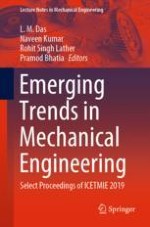This book consists of select proceedings of the International Conference on Emerging Trends in Mechanical and Industrial Engineering (ICETMIE) 2019. It covers current trends in thermal, design, industrial, production and other sub-disciplines of mechanical engineering. This volume focuses on different areas of design engineering including computational mechanics, computational fluid dynamics, finite elements in modelling, simulation, analysis and design, kinematics and dynamics of rigid bodies, micro- and nano-mechanics, solid mechanics and structural mechanics, vibration and acoustics, applied mechanics, and biomechanics. It also covers various topics from thermal engineering including refrigeration plants, heat exchangers, heat pumps and heat pipes, combined heat and power and advanced alternative cycles, polygeneration, combustion processes, heat transfer, solar cells, solar thermal power plants, and the integration of renewable energy with conventional processes. This book will be useful for students, researchers as well as professionals working in the area of mechanical engineering, especially thermal engineering and engineering design and other allied areas.
